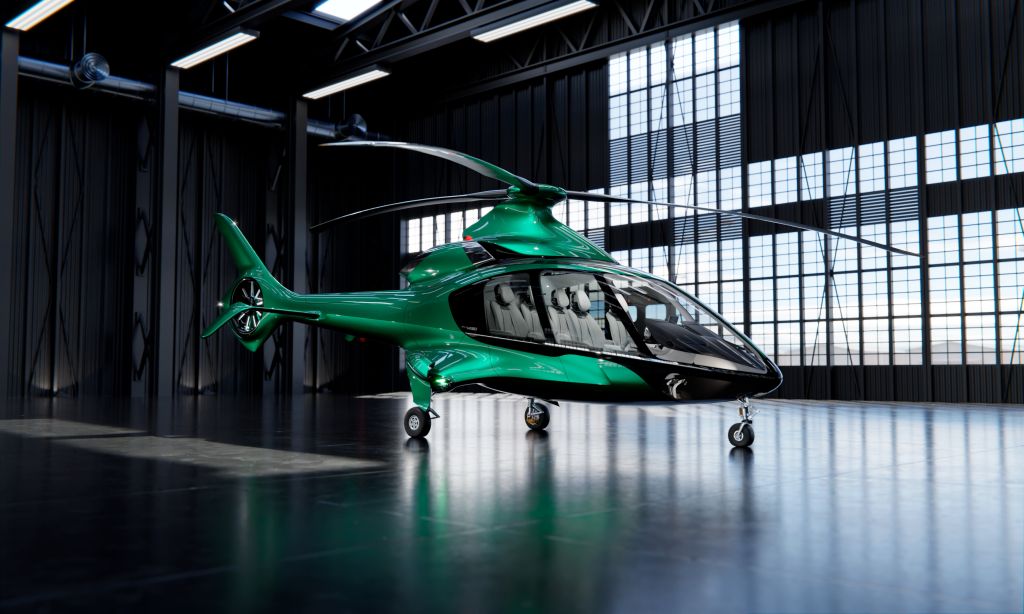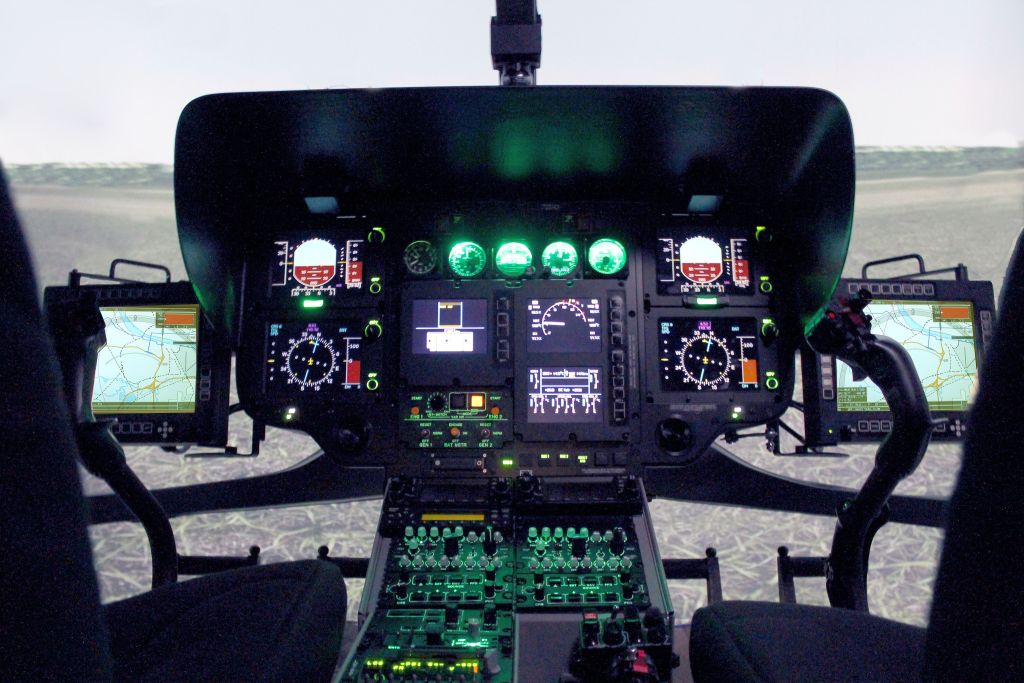A model of digital excellence

In a Q&A session, Paul Jenkins, j2 Aircraft Dynamics’ senior vice-president sales and marketing provides the latest lowdown on the highly exciting modelling and analysis partnership with Hill Helicopters.
j2 Aircraft Dynamics is a UK SME, specialising in the sale and application of its proprietary j2 Universal Tool-Kit software for whole aircraft aerodynamic modelling, analysis and simulation across both fixed wing and rotary wing platforms.
The company was recently awarded a substantial new contract by Hill Helicopters, a UK SME that has just announced the development of the HX50, a commercial five-seat helicopter and the first commercial rotary development in Europe outside of the larger OEMs in the last 20 years.
Q) Firstly, please bring me up to speed with your latest company news?
j2 has continued to improve its software with the release of v7 in the third quarter of 2022. The most recently released modules, j2 Rotary and j2 Flight have already proven their worth with commercial customers. As part of its continuous improvement strategy, j2 will continue to provide two minor improvements and a major release each 12 month period, as well as keeping pace with improvements in the Windows operating system on which it runs.
Q) How did the relationship with Hill first come about?
j2 had previously worked with GasTurb, a subject matter expert in engine modelling. We used their GasTurb software on a previous high-fidelity rotary project for a US client. It was through this relationship that j2 was recommended to Hill. j2 and Hill agreed to run an initial discovery session which then enabled the owner, Jason Hill to determine if j2 had the technical credentials to support his project and was the kind of company he wanted to do business with. Thankfully, we passed on both criteria, and the opportunity was born.
Q) With regard to physical modelling, design and analysis, what parts is Hill looking to produce?
Hill has already stated that by using modern digital twin technology, we are able to optimise both the inherent dynamic characteristics of the aircraft and engine, as well as developing overarching active flight control systems that enhance the flying experience, reduce pilot workload and profoundly improve safety beyond the level previously possible. Partnering with j2 alongside our in-house dynamics team ensures we are using best-in-class tools and world-leading expertise to deliver these outcomes with the highest possible confidence.

Specifically on the j2 inputs, we can bring all the different components, already digitally modelled, e.g. undercarriage, engines, rotor dynamics, fuselage into a single aircraft modelling tool through the use of their powerful API modules. By creating the whole aircraft model in this way - well in advance of first flight - j2 and Hill can evaluate in real-time the entire flight test regime, identify potential areas of instability and as yet unknown issues and look to resolve these at the engineering stage. It’s also an opportunity to involve the appropriate certification authority at an early stage to introduce the capabilities unlocked by the digital advances within the j2 tools and fundamentally accelerate the pathway to full certification of the aircraft.
Q) What are the types of performance demands placed on you by Hill?
j2 always undertakes a detailed discovery session with any client before advocating and approach or releasing j2 software. The process with Hill was completed quickly and has already produced a detailed list of requirements for j2 to deliver against in the development phase of the HX50 project. These requirements are set out within discreet work packs which carry well-defined deliverables and timetables against which j2 need to deliver.
At the front end of this project, j2 is acting as Hill’s entire aircraft modelling and analysis professional resource for the flight dynamics and engine model and flight control system developments with a view to then transferring this knowledge over to in-house engineering resources through a process of knowledge transfer and j2 software purchase. This follows an already well-trodden path for how j2 does business around the world.
It's likely this will also follow through post certification into the creation of high-fidelity Level D simulation platforms with j2 providing model host and interface build to the chosen simulation hardware provider. j2 will continue to provide technical support and product support into Hill, set against an already agreed commercial structure - not only on the HX50 project now - but also projecting forwards into other projects to come.
Q) What aspects of your simulation software products is Hill particularly happy with?
It’s early days, but j2 is unique in that it’s able to incorporate data from many sources into a single working framework. This gives Hill a very flexible central framework into which a range of externally coded systems can be integrated quickly and easily - all without writing additional code - and this accelerates the delivery of a high-fidelity digital twin model.
j2 has learned over many years to be very flexible as to how it interfaces to engines, flight control systems, visual systems, etc., as many are derived and delivered in a variety of different codes and data types. The building of the digital twin - well in advance of first flight - is certainly attractive, but it’s the power of ‘pilot in the loop’, being able to fly the whole aircraft in simulation many times with corrections being made instantly without writing code and then re-evaluating which is really attractive, especially when looking at sensitivity analysis and unknowns. Identifying and dealing with any such matters, well in advance of first flight gives Hill a significant commercial and technical advantage.
Q) What kinds of benefits and synergies does Hill derive from the successful implementation and use of your products?
It’s difficult to answer this on behalf of Hill, but their statement in the recent press release says it all with respect to identifying the benefits of using j2 software: “By using modern digital twin technology, we are able to optimise both the inherent dynamic characteristics of the aircraft and engine, as well as developing overarching active flight control systems that enhance the flying experience, reduce pilot workload and profoundly improve safety beyond the level previously possible. Partnering with j2 alongside our in-house dynamics team ensures we are using best-in-class tools and world leading expertise to deliver these outcomes with the highest possible confidence.”
Q) Could this Hill relationship lead to lucrative business in any latest eVTOL electric rotorcraft projects?
The simplest answer is yes. j2 had proven themselves with a high-fidelity rotary project for the US Air National Guard on the UH72A in 2017. In 2019 j2 won business in the US with Alakai. Alakai was designing a multi-rotor eVTOL vehicle. During its development cycle, j2 had ensured the overall capability could also be applied to non-conventional aircraft development, and Alakai recognised this. So, conventional rotary came first in 2017 and led to the non-conventional aircraft design opportunity in 2019. j2 modelling, analysis and simulation tools fit very well into the demands of high-fidelity rotary modelling across both conventional and non-conventional aircraft types. This flexibility, coupled with the high-fidelity rotary expertise, is a unique strength of j2 and this was recognised by Hill helicopters in the award of the contract with them.
Q) Typically what are the types of demands placed on your company by today's aerospace customers?
Price isn’t something the aerospace industry really shies away from, as the focus is primarily on proof and delivering trusted answers. j2 software appears to be competitively priced and we haven’t come across any downward pressure in that regard. What is vitally important - especially when selling a commercial software product - is demonstrating you have a continuous improvement capability and ethos - which we do. This reinforces the point that our software tools are constantly improving - some of this led by end-user customers and will not become legacy.

A key benefit of using j2 software is that we replace old legacy tools and software that can no longer be supported or used, so keeping step with the evolution of the Windows operating system, on which we run and continuing to improve the j2 Universal Tool-Kit by both function and performance is what really counts. Also, the ability for end users to have access to a flexible license structure that meets the financial demands of a project in capital versus an expense cost structure is also an important area to appreciate, so that we understand fully the rules of commercial engagement and get the approach and cost structure right. Finally, the ability to ramp up numbers of users quickly and easily - within 24 hours - to accommodate peaks in demand has also been a useful benefit for our end-user clients.
Q) Is Industry 4.0 helping us look at some of the new innovations fuelling the aerospace industry?
Industry 4.0 is very much looking at how the move to digital tools and process can benefit manufacturers. In the case of j2, we are very much a provider of a tool-kit and process that is at the heart of using data, as opposed to the writing of code, and this is to our advantage. The emphasis in development was all about the ease with which old code and data could be interfaced into j2 software. We are very good at this, which means that older, trusted code isn’t wasted, but instead is ring-fenced and protected - without the worry and costs associated with supporting a legacy system. In the case of j2, we do this very well.
Q) Finally, is the sector embracing a digital mindset or is it getting left behind?
I strongly believe that the aerospace sector is very much at the forefront of the digital mindset, and after a slow start we are seeing it evolve very quickly. Aviation engineering is all about trust. You must trust the answers you are producing, so anything new always takes time to work through the technical inquisition: can we trust this? j2 has been dealing with technical inquisitions since the commercial launch in January 2010, and it’s by working with end-user clients and demonstrating how you arrive at your answers - and then side-by-side comparisons with ‘own trusted code’ that you create the trust and win the business. This is what j2 has been doing since we launched and we have been very successful in that regard.












